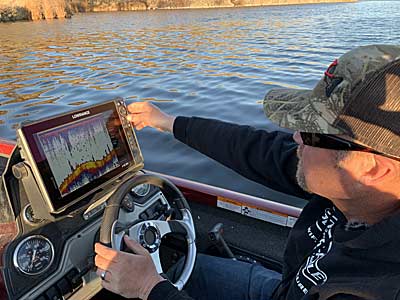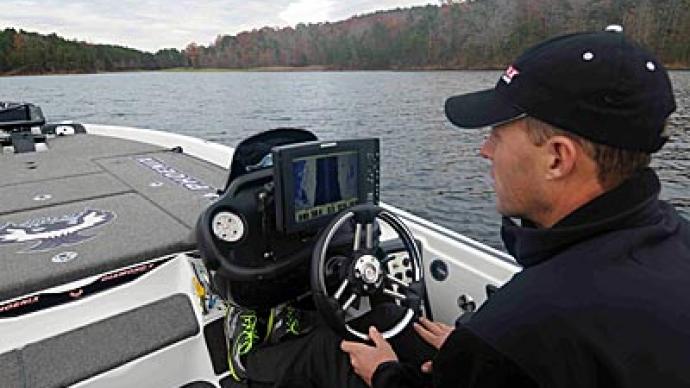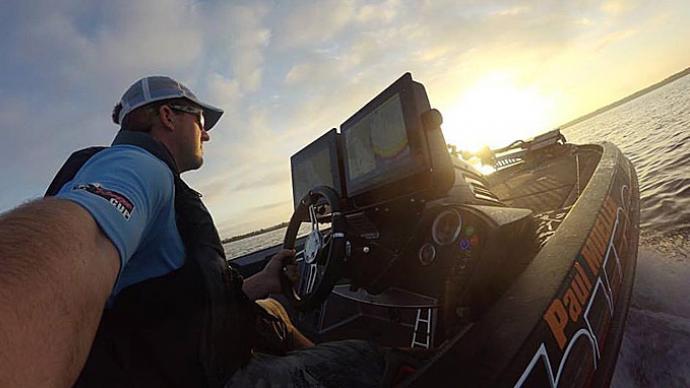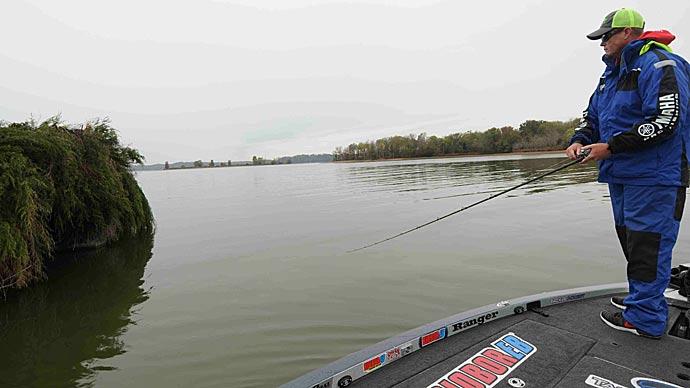
A fish finder is a highly effective tool that will allow you to see fish and structure you never knew were there; however, one slight misstep in the buying process can make your new device ineffective and, at times, they will not show you the complete picture.
We received many questions and concerns from fishfinder buyers and decided to highlight the biggest mistakes made when purchasing a fish finder and tips to avoid them.
Mistake #1: Choosing the Wrong Type of Sonar for Your Needs
The three common types of sonar are 2D Sonar, Down Scan, and Side Scan. The fourth option is forward-facing sonar that is available from the three major brands: Garmin, Lowrance, and Humminbird.
Most of today's marine electronics are available with 2D sonar as standard and Down and Structure Scan as additional options or as a standard feature on many units. Forward-facing sonar is limited to specific models and requires a separate specialized transducer mounted to the trolling motor's shaft.
The main difference is that 2D and Down Scan broadcast signals directly below the boat while Side Scan broadcasts a fan-like angled signal to the boat's sides. Forward-facing sonar is just like it sounds and shows a picture of what is in front of the boat in a live view.
Going All In
Pros: Having all the available tools gives you a complete picture of what is going on below the boat, to the sides, and in front of you.
Focused: Allows the user to see greater details, like an individual fish within a school or structure.
Accuracy: If surveying or pattern running, having all of the available technologies will increase the accuracy of readings. You can cross-reference each and get a complete picture of what you are seeing.
Cons:
Cost: Having all of the available technologies won't be cheap. In addition to having a powerful unit (that will cost more), you will also need to have all of the correct transducers to use them.
Side Scan
Pros:
Scan Vast Amounts of Water: Cover more area in a single pass. An average fish finder can read around 100 feet to each side but staying around 75-90 feet will provide the greatest detail.
Less Disturbance: Side Scan does not require a boat to go directly over the area of interest. This means anglers can get readings on undisturbed areas.
Less Noise: Humminbird marketing director Mark Gibson explains how Side Imaging filters out the noise, "Say you've got a handful of BBs. Using traditional sonar is like slamming those BBs on a concrete floor. Imagine how many of those will bounce back up - lots. Side imaging is like throwing BBs down a driveway. Imagine how few would come back; maybe only one or two return toward you from hitting a rock."
Cons:
Less Effective in Deep Water: The angle of the transducer will be less effective in deep water. The term "deep water" is tough to define, but on average, anglers will start to see a decline in the quality of images at 75 feet or more.
Combination (2D, Down Scan + Side Scan)
If you are still having trouble deciding which sonar is right for you, here is the good news: With the tremendous advances being made in recreational fishing sonars, there is no longer a need to choose between Down Scan and Side Scan.
With affordable Down and Side Scan combinations available, it is highly recommended that fisherman purchase this combination technology with their next fish finder and experience the best of both worlds.
Mistake #2: Choosing a Fish Finder Solely for Cost Reasons
An entry-level fish finder may be all you can afford, but the lower levels from all major brands may be stripped down and not powerful enough to perform all tasks effectively.
If standard 2D sonar and mapping are all you are interested in, some great values are available. An alternative way to save some cash is to shop used units or go down one screen size. Also, all of the brands frequently update and release new generations of their most popular units and the previous models are often discounted substantially when the new ones arrive.

An Entry-Level Fish Finder:
Pros:
Many Uses: Even the most inexpensive marine electronics available today are light years ahead of what was available just five or ten years ago. They are powerful on the water computers and will still do many things to help you find fish.
Cheaper: They are much less expensive than the top-of-the-line models.
Cons:
Slower Processing Speeds: Most entry-level are still plenty fast compared to previous models, but they are not as quick at producing all of the data coming to them from the transducer.
Fewer Features: The lowest cost option will be limited to what it can do. They are scaled-down versions of the top products, but depending on your needs as an angler, they may be perfect for your fishing style.
Mistake #3: Not Purchasing a Mapping Card
When choosing a new fishfinder, buyers can be overwhelmed by all the features and options for different sizes, brands, and technologies. But, one thing that is important no matter which unit you decide on is the map. Most electronics come with a base map built-in, but that does not give much detail. The addition of a specialized map card will enhance your experience and help you find more good fishing locations. Some mapping cards even allow for an overlay of satellite images.

Pros:
Get Home Safe: In case of an emergency, every boater needs GPS and a mapping card to help with the trip home and follow your trails back to your favorite fishing spot.
Make Your Own Maps: If you frequent an uncharted body of water or fish on a small lake, there are programs available that will allow you to create your own maps. This is available for all of the major electronics brands.
Cons:
Cost: After buying a brand new chart plotter, the last thing you want to do is fork out more money. A good mapping card will cost you over $150, but it will prove to be an excellent investment and is something that every fisherman should have.
One Size Does Not Fit All
Different fishing situations, the region you live in, fishing locations, etc., all play a role in which fish finder is right for you. By reviewing these three common mistakes, the pros and cons of each, and specific products, you will be well on your way to choosing a fish finder that will lead to greater effectiveness and enjoyment on the water.




